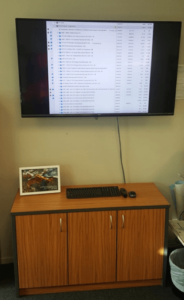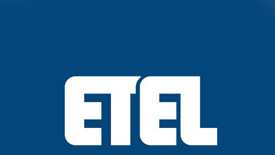About the Company
ETEL Limited is a leading provider of distribution transformers for the New Zealand, Australian, and South Pacific markets. Typical customers include lines companies (a.k.a. power network companies); renewable energy generators, mining companies; and industrial contractors.
Of the 8,000 units that ETEL ships per year, roughly 80 percent are standard product; the remainder are custom-built. The company receives 100 to 200 such custom orders per year, each generating NZ$30,000 to NZ$4 million in revenue.
Their Challenge
Up through 2014, ETEL used Microsoft Access to track the flow of custom orders through the sales, engineering, and purchasing processes. When managers needed a status update, they had to generate and print a report, carry it around to collect updates, then return to their desks to input changes. “The Access database provided limited information and wasn’t a live document, so projects still required a lot of manual coordination,” says Ashley McLean, Project Coordinator at ETEL.
Lack of an adequate project and workflow management solution presented several challenges, the greatest being poor visibility and accountability. “We had no way to accurately track project status, progress, and effort,” says McLean. “It was difficult to know if projects were on track; when they were behind, we often weren’t aware.”
 It was just as hard to predict delivery dates, resulting in a standard answer of 8 to 12 weeks, regardless of actual scope. “We’ve seen a period of rapid growth, and not knowing our true engineering capacity often caused problems,” says McLean. “Customers weren’t affected, but internally we were working longer and harder—and fighting more fires—to maintain superior levels of customer satisfaction.”
It was just as hard to predict delivery dates, resulting in a standard answer of 8 to 12 weeks, regardless of actual scope. “We’ve seen a period of rapid growth, and not knowing our true engineering capacity often caused problems,” says McLean. “Customers weren’t affected, but internally we were working longer and harder—and fighting more fires—to maintain superior levels of customer satisfaction.”
Lack of hard data also hamstrung ETEL’s efforts to adopt lean techniques. For example, without time tracking, the company did not know how much effort went into each project. “As the saying goes, you can’t improve what you can’t measure,” says McLean. “Put simply, to continue growing our bottom line, we had to start acting more like the big business we had become—and that meant better project management. I had been looking at several ‘real’ project management solutions, but none met all of our needs.”It was just as hard to predict delivery dates, resulting in a standard answer of 8 to 12 weeks, regardless of actual scope. “We’ve seen a period of rapid growth, and not knowing our true engineering capacity often caused problems,” says McLean. “Customers weren’t affected, but internally we were working longer and harder—and fighting more fires—to maintain superior levels of customer satisfaction.”
Kent Sheldon, Finance Manager at ETEL, had also been looking for a better way to manage the work within his own department—for example, weekly payroll processing and monthly closing of the books. “I tried using Outlook to assign and track tasks, but it didn’t work very well,” he says “I also tried Microsoft Project, but it was too complex. It was obvious that we could all benefit from a project management solution that connected people and processes, incorporated time tracking, and worked across departments.”
Solution
In December 2014, upon discovering LiquidPlanner, Sheldon decided to try it within the Finance department. A few months later, McLean began testing it on a small design-and-build project. “I saw LiquidPlanner as a turn-key solution that would help us accurately allocate and manage workloads and resources, come up with realistic project completion dates, and get everyone working together,” recalls McLean. “At the same time, it wasn’t so complex that it would distract us from day-to-day business. And because LiquidPlanner is subscription based, startup costs were negligible.”
Other than identifying a need for more realistic engineering estimates, that first project ran smoothly. “Just as important,” adds McLean, “we saw how LiquidPlanner captured a full record of all project data—giving us exactly what we needed to measure and improve moving forward.”
That’s when ETEL decided to broadly adopt LiquidPlanner—and started aggressively training people on its use. “The online training videos from LiquidPlanner were very helpful,” says McLean. “Also, LiquidPlanner let me see the number of hours logged by each person and sort on last use, which informed me who to approach with further training. Today, about 90 percent of all office staff use LiquidPlanner.”
ETEL now relies on LiquidPlanner for the product design and development process, including both custom orders and standard products. Its user base spans the company’s five offices in New Zealand and Australia, including 58 people across the company’s Sales, Engineering, Supply Chain, and Finance teams. Typical project duration ranges from 6 to 15 weeks.
“I can’t think of another company that has gone from initial trial to such full-blown, broad, effective usage of LiquidPlanner in less time, with less hand-holding,” says Evan Hill, Customer Success Manager for ETEL at LiquidPlanner.
Here’s how project management at ETEL works today:
- When the sales department creates an order (or a tender for an order) in Salesforce, that system automatically uses LiquidPlanner’s RESTful APIs to create a new project—then LiquidPlanner immediately notifies engineering that the new project is ready for estimation and task assignment.
- Engineering uses best-case/worst-case estimates in LiquidPlanner to take uncertainty into account when estimating the project; they simply input a realistic range for each task and LiquidPlanner automatically calculates when the task is most likely to be completed, taking into account past history as well as each person’s availability, priorities, vacations, and other factors.
- As new data is input, LiquidPlanner uses predictive, priority-based scheduling to dynamically recalculate the most likely completion date for all projects. “That’s the magic of LiquidPlanner,” says McLean. “When anything changes, we can immediately see the end-to-end impact to the business.”
- Assigned tasks appear on each user’s project workspace in order of priority, enabling them to always know what’s most important. Hours logged on each task are captured using LiquidPlanner’s timesheet features. Individual project workspaces also provide tools for attaching comments to tasks, uploading documents tied to tasks, and subscribing to updates on tasks.
- Line-level and senior managers use LiquidPlanner dashboards for instant status updates. For example, Sheldon maintains a dashboard that displays incomplete tasks on the left side and completed tasks on the right side. “At a glance, I can see what’s on track and where my attention is needed,” he says. “It’s great for monitoring recurring efforts such as payroll processing or closing the books.”
- Many people use LiquidPlanner’s mobile features for quick access from their phones. “I often check status or create and assign new tasks on my phone when in a meeting—or just capture the tasks and then organize and assign them later,” says Sheldon. “It’s not uncommon to create a task in a meeting, only to find that it’s already been completed by the time the meeting is over.”
Benefits
ETEL’s adoption of LiquidPlanner has improved project management in many ways, beginning with vastly improved visibility, accountability, and communication. Estimated effort and delivery dates are now more accurate, helping to instill a culture that expectations are reasonable and must be met. Potential setbacks and resource conflicts are identified earlier and remedied more quickly, and fewer problems have improved employee satisfaction and reduced the risk of missing customer commitments. Perhaps most important, however, is how all this is fueling increased business growth.
Improved Visibility, Accountability, and Communication
ETEL now has deep visibility into the status of all projects, measured in an accurate and consistent way. “We continuously monitor hours of effort logged and remaining, percentage complete and remaining, and estimated completion dates versus customer commitments,” says McLean. “And because LiquidPlanner is an ‘open’ system that makes all of this information visible to every user, accountability is greatly improved.”
To further instill a culture of accountability, ETEL installed large, flat-screen monitors on the walls in most departments. “The monitors display project status versus customer commitments for everyone to see,” explains McLean. “It helps everyone on the team realize that their individual contributions are part of a larger picture, and reduces the departmentalization of information that was a common problem in the past.”
More Realistic Estimates and Deadlines
As of January 6, 2016, ETEL has used LiquidPlanner to capture a body of project history that includes 663 projects, 7,582 tasks, 420 milestones, 47 clients, 2,587 comments, and 23,744 timesheet entries—hard data that the company can use to fine-tune its estimation of new projects. “Before, project estimates were plus-or-minus 25-percent accurate; now we’re at plus-or-minus 10-percent,” says McLean. “Just as important, if we estimated incorrectly or a project is delayed for any other reason, we can quickly discern the impact, if any, that it will have on both that project and all other projects.”
Improved Process Efficiency and Capacity Planning
ETEL’s use of LiquidPlanner has helped the company improve efficiency and capacity planning, enabling it to get more done—and to get it done faster—with existing resources. “Any process inefficiencies, training gaps, and weaknesses in our supply chain are now readily apparent,” says McLean. “In the past, handoffs between departments often resulted in unanticipated delays, even if each department had accurately scoped-out its work. Today, thanks to improved visibility and communication, such issues are rare.”
LiquidPlanner is also helping ETEL optimize throughput. “If Department A is delayed, LiquidPlanner calculates what else Department B should work on based on companywide priorities; the same holds true if Department A is ahead of schedule,” says McLean. “We can also see where tasks can be completed in parallel instead of in series, and where bottlenecks are occurring within large departments.”
Concludes McLean, “With the tools we have now, we can always know our true engineering capacity and make appropriate decisions—and make them proactively instead of reactively. For example, if overtime is going to be required, we’ll know that early and plan for it ahead of time. Lean manufacturing is all about accountability and KPIs, and we’re now well-equipped in both of those areas.”
A Better Bottom Line
Through its use of LiquidPlanner, ETEL is achieving what every company wants: maximum growth and a better bottom-line. “LiquidPlanner gives us the tools, information, and decision-making capabilities we need to break through our revenue ceiling and fuel strong, continued business growth,” says Sheldon. “Now we always know our true engineering capacity, which means we can maximize throughput and run the business at a consistent 100-percent. I’m really proud of the changes we’ve made; we’ve come a long way.”


